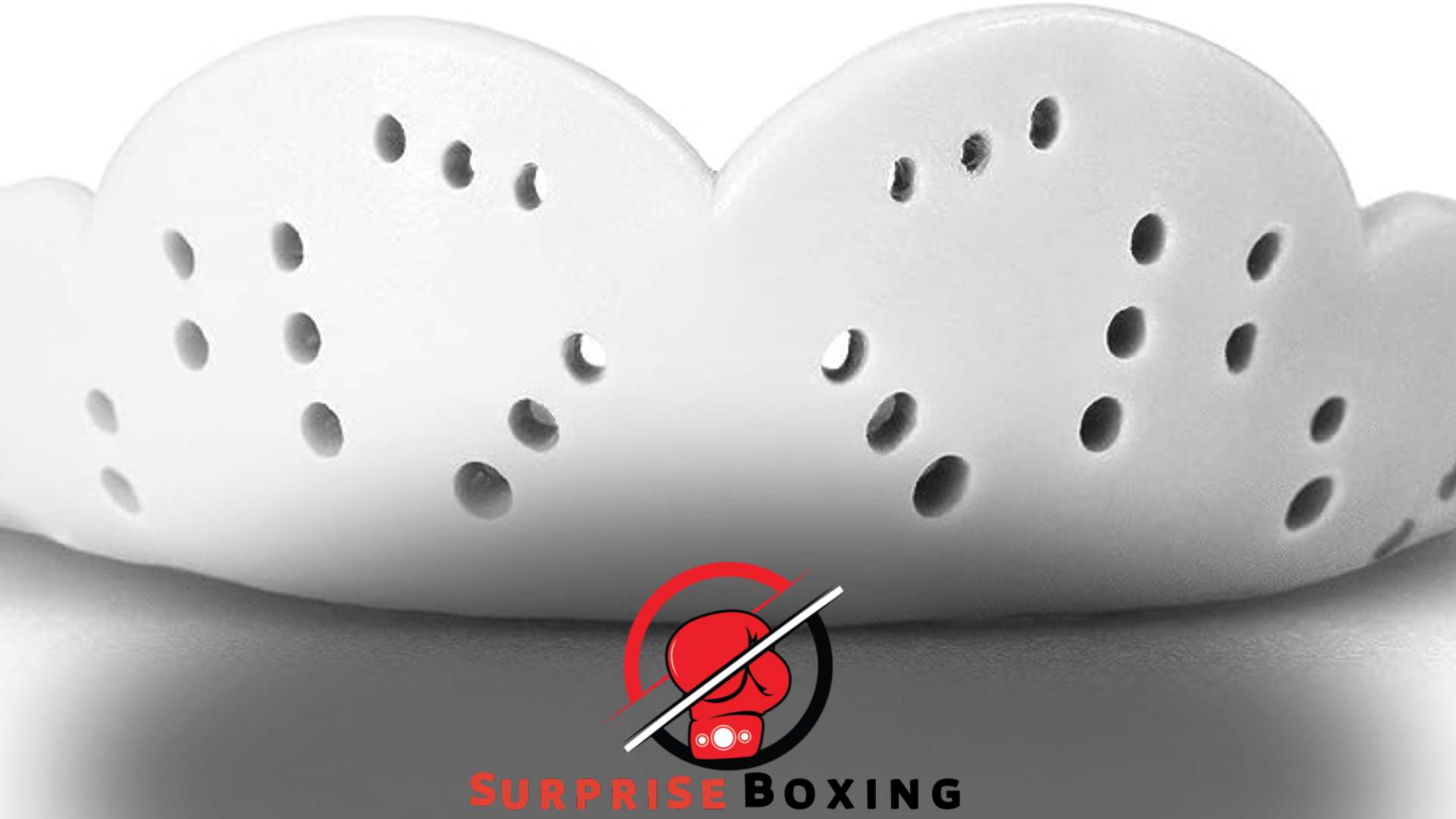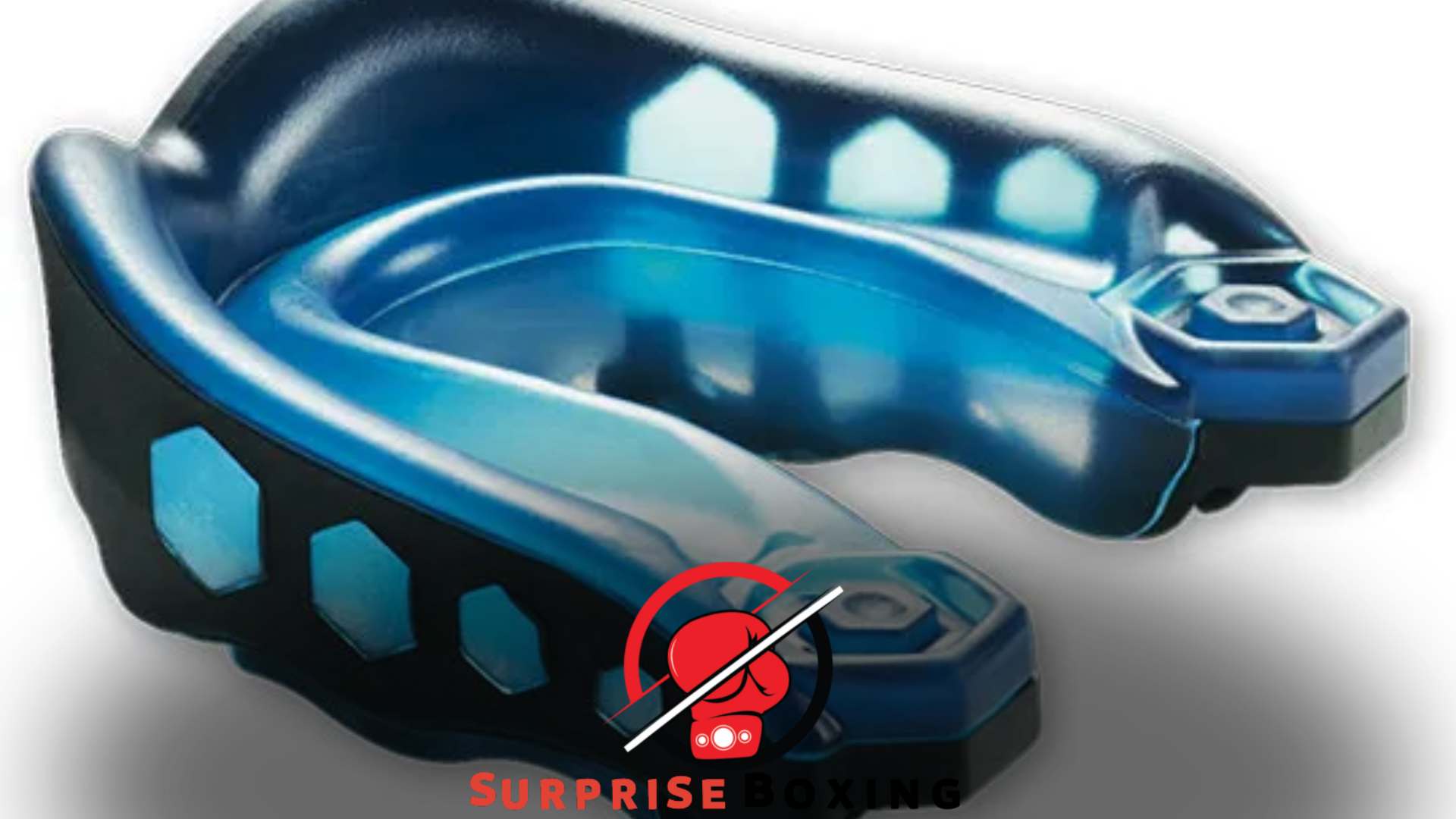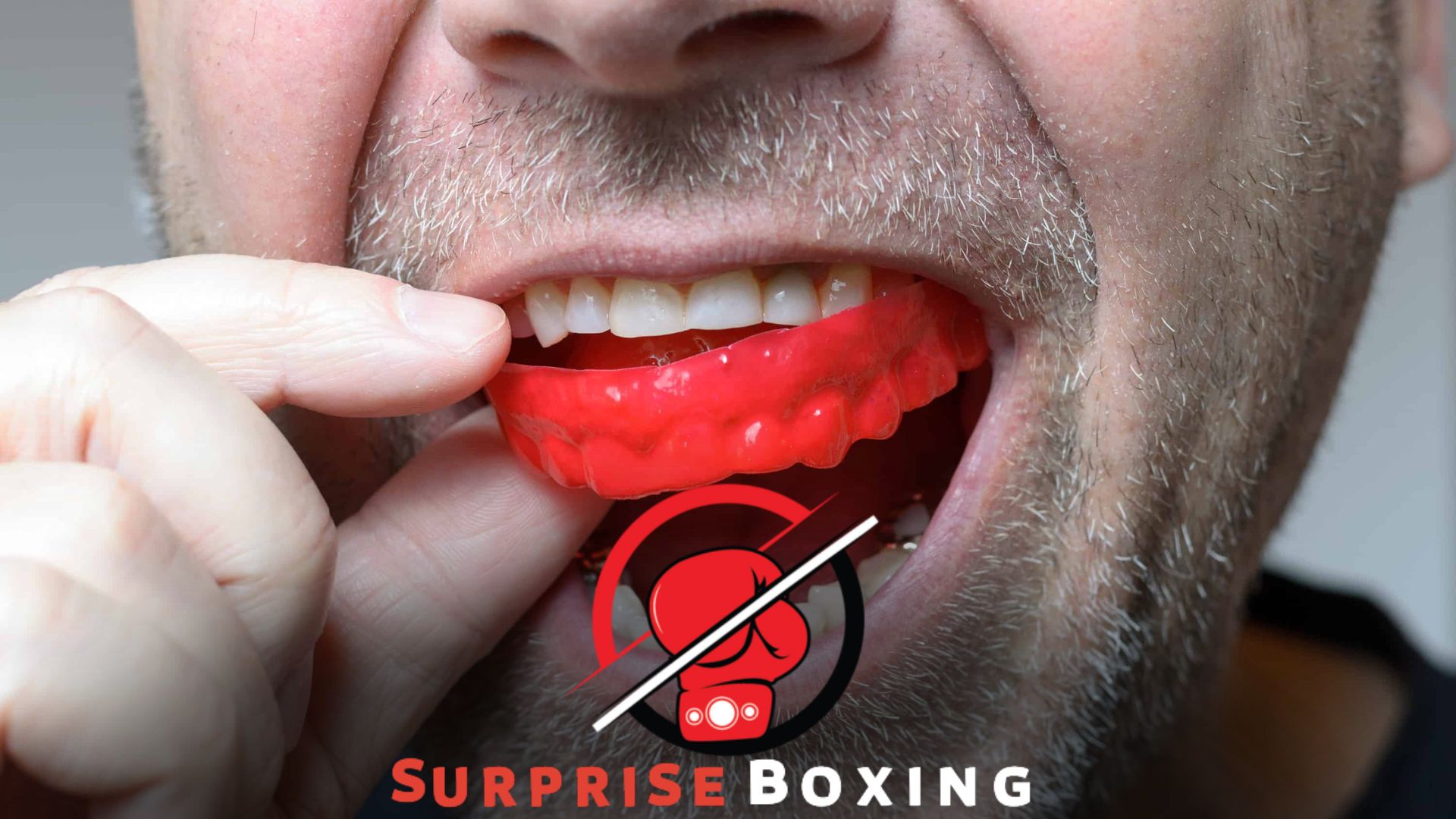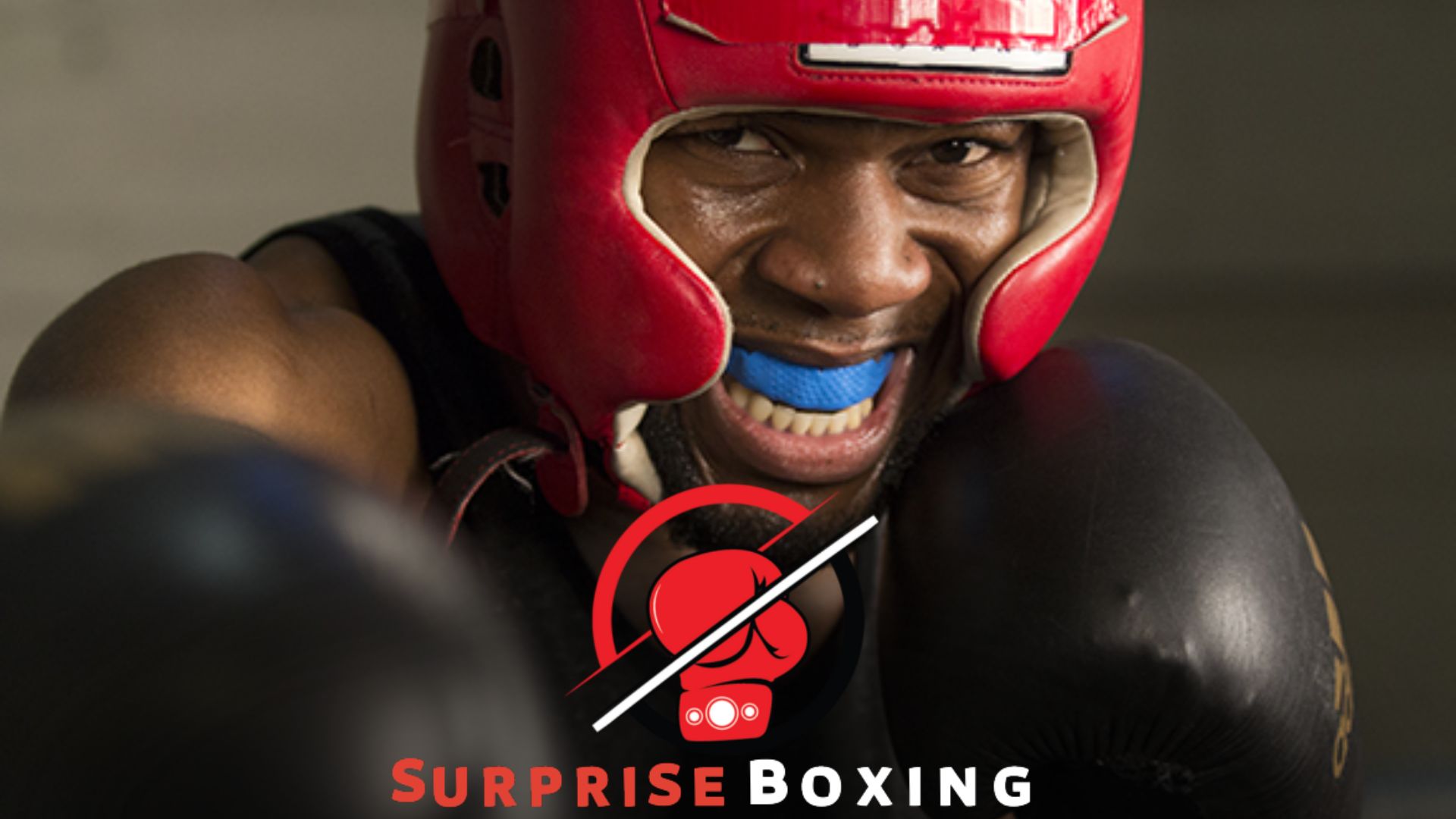To use a mouthguard for boxing, first, ensure the mouthguard is clean and properly fitted. Then, place the mouthguard in your mouth, ensuring it covers your teeth and gums.
Boxing is a physically demanding sport that requires athletes to take proper precautions to protect themselves from injuries. One essential piece of protective gear in boxing is a mouthguard. A mouthguard is a flexible device worn over the teeth and gums to provide protection against blows to the face and reduce the risk of dental injuries.
Knowing how to use a mouthguard correctly ensures maximum safety and effectiveness. This article will guide you on properly using a mouthguard for boxing, helping you stay protected and focused during your training and matches. So, let’s delve into the details of using a mouthguard effectively for boxing.
Understanding Mouthguards: Types, Selection, and the Importance of Proper Fit for Safe Boxing Practices

Mouthguards are essential for safe boxing practices, ensuring protection and preventing dental injuries. Learn about the types, proper selection, and significance of a well-fitted mouthguard for boxing.
Boxing is an intense sport that requires proper protective equipment, and one crucial piece is the mouthguard. Wearing a mouthguard helps safeguard your teeth and mouth during training or bouts and reduces the risk of serious injuries.
Understanding the types of mouthguards available, selecting the right one, and ensuring a proper fit is crucial for safe boxing practices. Here’s everything you need to know:
Types of Mouthguards
- Stock mouthguards are pre-formed and ready to use out of the box. While they provide some protection, they often lack a proper fit, making breathing difficult or speaking comfortably tricky.
- Boil-and-bite mouthguards: These are made from a thermoplastic material that softens when boiled. Once soft, you bite into them to create an impression of your teeth, resulting in a semi-custom fit.
- Custom-fitted mouthguards: The most recommended option, these mouthguards are individually crafted by dental professionals. They provide the best fit, comfort, and protection, specifically designed for your teeth and mouth.
Selecting the Right Mouthguard
- Comfort: Look for a mouthguard that fits well and feels comfortable. It should not cause discomfort or hinder your ability to breathe or speak.
- Protection: Opt for a mouthguard that offers sufficient protection for your teeth and mouth. Ensure it covers both your upper and lower teeth and provides cushioning for impact.
- Durability: Consider the durability of the mouthguard. It should be able to withstand regular use and not easily deform or lose its shape over time.
Importance of Proper Fit
- Enhanced protection: A properly fitted mouthguard offers superior protection by distributing the force of impact evenly over your teeth and gums, reducing the risk of dental injuries, fractures, or jaw dislocation.
- Comfort and performance: With a snug yet comfortable fit, a mouthguard lets you move your mouth freely, speak clearly, and breathe without restrictions. This ensures optimal performance during training sessions and matches.
- Prevention of soft tissue injuries: A well-fitting mouthguard acts as a barrier between your teeth and soft tissues, reducing the risk of lacerations, bruising, and other injuries to the lips, tongue, and cheeks caused by accidental bites or impacts.
- Retention and stability: A mouthguard that fits properly and stays securely in place during boxing sessions, minimizing the chances of it shifting or falling out during intense movements. This eliminates the need for frequent adjustments, providing uninterrupted protection.
Choosing the correct type of mouthguard and ensuring a proper fit are essential steps to protect your teeth and mouth during boxing. You can select a mouthguard that best suits your needs by understanding the options available and considering factors such as comfort, protection, and durability.
Remember, the right mouthguard enhances your safety and allows you to perform at your best without hindrance.
Importance of Using A Mouthguard in Boxing: Safeguarding Your Dental Health and Preventing Serious Injuries
Protect your dental health and prevent serious injuries by using a mouthguard in boxing. Safeguard yourself during training and fights with this essential piece of equipment.
Boxing is a physically demanding sport that requires strength, skill, and agility. However, it also comes with the risk of injuries, particularly to the mouth and jaw. A mouthguard is one way to protect yourself and ensure your dental health.
This small but essential piece of equipment can significantly prevent severe injuries and safeguard your overall well-being in the ring. Here’s why using a mouthguard is of utmost importance:
Protection Against Dental Injuries
- Absorbs impact: A mouthguard acts as a cushion, absorbing the force of a blow to your face or jaw. It helps distribute the impact more evenly, reducing the risk of your teeth getting knocked out or fractured.
- Guards against soft tissue injuries: Aside from protecting your teeth, a mouthguard helps shield your lips, cheeks, and tongue from damage caused by accidental bites or sudden impacts.
Prevention of Jaw Injuries
- Shock absorption: A properly fitted mouthguard cushions the teeth and absorbs some of the impact that would otherwise be transferred to your jaw. This can help prevent fractures or dislocations of your jawbone.
- Stabilizes the jaw joint: A mouthguard can help reduce the risk of temporomandibular joint (TMJ) injuries by providing stability and support. Tmj issues can lead to pain, difficulty in jaw movement, and even chronic discomfort.
Overall Safety and Performance
- Enhanced focus and confidence: Wearing a mouthguard can help boost your trust in the ring, knowing that you have taken an additional safety measure. This confidence lets you focus better on your techniques and strategies during your boxing bouts.
- Uninterrupted training and matches: Without a mouthguard, you may be at a higher risk of sustaining injuries and need prolonged breaks from training or competition. Using a mouthguard can minimize the chances of such interruptions and continue pursuing your boxing goals without setbacks.
Proper Maintenance and Hygiene Tips
- Cleanliness: After each use, clean your mouthguard thoroughly with a toothbrush and mild soap or mouthwash. Avoid using hot water, as it can alter the shape of the mouthguard.
- Regular replacement: Over time, mouthguards can become less effective due to wear and tear. Replacing your mouthguard every 6 to 12 months or sooner if it shows signs of damage or distortion is recommended.
- Proper storage: Store your mouthguard in a ventilated case to allow it to dry completely and minimize the growth of bacteria. Avoid exposing it to direct sunlight or extreme heat, as it can affect its shape and functionality.
By prioritizing using a mouthguard in boxing, you protect your teeth and jaw and ensure overall safety and performance. Make it a habit to wear a high-quality mouthguard during training sessions and competitions, and don’t forget to maintain and replace it regularly.
Safeguarding your dental health is essential to being a responsible boxer, allowing you to fully enjoy your passion while minimizing the risks of serious injuries.
Preparing To Use A Mouthguard: Ensuring A Proper Fit, Hygiene, and Compatibility With Other Protective Gear
To use a mouthguard for boxing, it’s crucial to ensure a proper fit, practice good hygiene, and check compatibility with other protective gear. This provides maximum protection during training or matches.
Boxing is an intense sport that requires proper protective gear, and one essential piece is a mouthguard. Preparing well before using a mouthguard ensures maximum safety and comfort during training or matches. This includes providing a proper fit, maintaining good hygiene, and considering compatibility with other protective gear.
Here’s what you need to know:
Proper Fit
- Choose the right type: There are various types of mouthguards available, including custom-fit, boil-and-bite, and stock mouthguards. Consider your preferences, budget, and level of protection required when selecting the style that suits you best.
- Follow the instructions: Regardless of your chosen type, it’s essential to follow the instructions provided carefully. Improper fitting may compromise both the effectiveness and comfort of the mouthguard.
- Fit evaluation: Once you have your mouthguard, it’s crucial to check its fit before using it. Ensure it covers your teeth adequately and comfortably, allowing easy breathing and speech.
Hygiene
- Rinse before and after use: It’s vital to rinse your mouthguard with cold water before and after each use. This helps to remove any debris, saliva, or bacteria that may have accumulated.
- Brush your teeth: Maintaining good oral hygiene by brushing your teeth before putting on a mouthguard will help minimize bacterial growth and ensure a cleaner environment inside your mouth.
- Proper storage: Store your mouthguard in a clean, ventilated case when not in use. This will prevent the growth of bacteria and preserve their shape.
Compatibility With Other Protective Gear
- Consider your headgear: If you wear headgear during boxing, make sure your mouthguard is compatible with it. They should not interfere with each other’s fit or functionality.
- Discuss with your trainer: Consult your trainer or coach to ensure your mouthguard is compatible with any other protective gear you use, such as face cages or shields.
- Comfort and mobility: Your mouthguard must allow you to move your head freely and comfortably without hindering your ability to breathe or speak clearly.
By ensuring a proper fit, maintaining good hygiene, and considering compatibility with other protective gear, you can optimize your safety and performance when using a mouthguard for boxing. Remember, these simple steps can go a long way in protecting your teeth and preventing unnecessary injuries.
Stay safe, and enjoy your boxing journey!
How To Use A Mouthguard Correctly
These simple tips teach the correct way to use a mouthguard for boxing. Ensure a secure fit, proper cleaning, and regular check-ups to protect your mouth during training and matches.
Wearing a mouthguard protects your teeth and jaw during boxing training or matches. Without proper usage, you may risk dental injuries and discomfort. To ensure you’re using a mouthguard correctly, follow these essential steps:
Step 1: Choose the Right Mouthguard
- Select a mouthguard that provides a comfortable fit and sufficient protection.
- Opt for a boil-and-bite mouthguard or custom-fit mouthguard to achieve the best results.
- Avoid using ill-fitting or damaged mouthguards, which may not provide adequate protection.
Step 2: Preparing Your Mouthguard
- Thoroughly clean and rinse your mouthguard before every use to maintain hygiene.
- Use cool water and a soft toothbrush to clean the mouthguard gently.
- Allow the mouthguard to air dry completely, or pat it dry with a clean towel before storing it.
Step 3: Preparing Yourself
- Ensure your hands are clean before handling your mouthguard to maintain hygiene.
- Carefully brush and floss your teeth before inserting the mouthguard.
- Rinse your mouth with water to remove any leftover toothpaste or debris.
Step 4: Fitting the Mouthguard
- Boil a pot of water and remove it from the heat source.
- Submerge the mouthguard in the hot water according to the manufacturer’s instructions.
- Once softened, remove the mouthguard from the hot water with a spoon and let it cool slightly to avoid burns.
Step 5: Inserting the Mouthguard
- Carefully place the mouthguard on your upper teeth with clean and dry hands.
- Press it firmly against your teeth to ensure a secure and comfortable fit.
- Use your tongue and finger to adjust the mouthguard for proper positioning and alignment.
Step 6: Testing the Fit
- Bite down gently to ensure the mouthguard remains in place without causing any discomfort.
- If the fit feels too loose or tight or causes difficulty breathing or speaking, repeat the fitting process or consult a professional for adjustments.
Step 7: Maintaining the Mouthguard
- After each use, rinse your mouthguard with cool water or use a mild, non-alcoholic mouthwash to clean it.
- Store the mouthguard in a ventilated container or case to allow it to dry and protect it from damage.
- Regularly inspect your mouthguard for signs of wear and tear, and replace it if necessary.
By following these steps, you can confidently use a mouthguard for boxing and reduce the risk of dental injuries, ensuring your teeth and jaw stay protected during training or matches. Stay safe, and enjoy your boxing sessions!
Maintaining and Storing Your Mouthguard: Essential Tips for Keeping Your Boxing Mouthguard Clean and Effective
Properly maintaining and storing your boxing mouthguard is crucial for hygiene and effectiveness. Follow these essential tips to keep your mouthguard clean and ready for use.
Proper maintenance and storage of your boxing mouthguard are crucial for ensuring its longevity and effectiveness. By following these essential tips, you can keep your mouthguard clean, hygienic, and ready for your next boxing match:
Clean Your Mouthguard After Each Use
- Rinse your mouthguard with cool water immediately to remove saliva and debris.
- Use a soft-bristled toothbrush and toothpaste to clean the mouthguard gently. Avoid using abrasive cleaners or excessive force, as it may damage the material.
Regularly Sanitize Your Mouthguard
- Soak your mouthguard in a denture cleaner or a solution explicitly formulated for mouthguards after each use.
- Follow the instructions on the cleaner or solution bottle for the recommended soaking duration.
- Rinse your mouthguard thoroughly before wearing it again.
Keep Your Mouthguard Dry
- Allow your mouthguard to air dry completely before storing it. Moisture can promote the growth of bacteria.
- Avoid storing your mouthguard in a damp or enclosed space, such as a plastic bag or case, as it can trap moisture and lead to mold or mildew.
Store Your Mouthguard Properly
- Use a ventilated and protective case to store your mouthguard when not in use.
- Avoid leaving your mouthguard exposed to sunlight or high temperatures, as it can distort the shape and compromise its fit.
Replace Your Mouthguard When Necessary
- Over time, mouthguards may become worn out or lose shape, reducing their protective capabilities.
- Inspect your mouthguard regularly for signs of wear and tear, such as cracks, holes, or a loose fit.
- Replace your mouthguard if it no longer fits snugly or provides adequate protection.
These essential tips for maintaining and storing your boxing mouthguard can ensure its cleanliness, effectiveness, and lifespan. Proper care and regular inspections will help protect your teeth and jaw during intense boxing sessions, allowing you to focus on your performance with peace of mind.
Ensuring the Mouthguard’s Effectiveness: Proper Maintenance, Replacement, and Inspection for Optimal Protection in Boxing
Proper maintenance, regular inspection, and timely replacement are essential for ensuring the mouthguard’s effectiveness in boxing, providing optimal protection for athletes.
Using a mouthguard is crucial for protecting your teeth and jaw during boxing. However, wearing a mouthguard is not enough; you must also ensure its effectiveness through proper maintenance, replacement, and inspection. Following these guidelines guarantees that your mouthguard offers optimal protection whenever you enter the ring.
Maintenance
- Cleanliness is vital: Rinse your mouthguard with cold water before and after each use to remove dirt, saliva, or debris. Use a mild soap and a soft toothbrush to thoroughly scrub the mouthguard’s surface. Avoid using hot water, as it can damage the material.
- Store it properly: After cleaning, allow your mouthguard to air dry completely before storing it in a ventilated container. This prevents the growth of bacteria and keeps your mouthguard fresh and odor-free.
- Avoid exposure to heat: Heat can cause your mouthguard to lose shape and effectiveness. Keep it away from direct sunlight, hot surfaces, and hot water to maintain its structural integrity.
Replacement
- Periodic evaluation: Regularly assess your mouthguard’s condition to ensure it still provides adequate protection. Over time, mouthguards can wear out or become damaged, compromising effectiveness. If you notice any signs of wear, such as cracks, tears, or distortions, it’s time for a replacement.
- Time for change: Replace your mouthguard every six months, even if it is still in good condition. The materials can deteriorate over time, reducing their protection level. Adhering to this schedule ensures that your mouthguard is always in optimal condition.
Inspection
- A perfect fit: Before every boxing session, ensure your mouthguard fits your teeth securely. It should cover all your teeth and stay in place even during rigorous movements. If it feels loose or uncomfortable, consider getting it adjusted or replaced to maintain maximum protection.
- Bite-down test: Perform a bite-down test to confirm that your mouthguard is aligned properly. Bite down gently and ensure that your upper and lower teeth align naturally. If there’s any interference or discomfort, consult a dental professional to address the issue.
Additional Tips for Safe Boxing: Mastering Techniques, Protective Gear, and Injury Prevention
Master the art of safe boxing by not forgetting to use a mouthguard. This essential protective gear aids in injury prevention, ensuring you can confidently tackle any boxing technique.
Boxing is not just about throwing punches; it requires mastering techniques, utilizing protective gear, and taking necessary precautions to prevent injuries. Here are some additional tips to keep you safe and maximize your boxing experience:
Mastering Techniques
- Proper footwork: Maintain a stable stance with your feet shoulder-width apart to ensure balance and agility during the fight.
- Hand positioning: Keep your hands up, continually protecting your face. This stance allows for quick defense and counterattacks.
- Head movement: Learn to bob and weave to evade incoming punches effectively. Practice ducking and slipping to avoid getting hit.
- Breathing technique: Focus on controlled breathing to optimize oxygen intake and maintain stamina throughout the match.
- Efficient punches: Develop a strong jab, cross, hook, and uppercut. Remember to keep your points straight and quick to maximize impact.
Protective Gear
- Mouthguard: Always wear a mouthguard during training and bouts. It protects your teeth, jaw, and overall oral health. Get a custom-fitted one for superior comfort and effectiveness.
- Hand wraps: Prioritize wrapping your hands before putting on gloves. Hand wraps provide support and stability to your wrists and knuckles, reducing the risk of injury.
- Boxing gloves: Invest in high-quality boxing gloves that fit correctly. They protect your hands and reduce the impact on your opponent while providing cushioning for your fists.
- Headgear: If you’re engaging in full-contact boxing, consider wearing headgear to minimize the risk of head injuries. Ensure it fits snugly, doesn’t obstruct your vision, and offers sufficient padding.
Injury Prevention
- Warm-up routine: Always start your boxing session with a thorough warm-up. Engage in dynamic stretching and light cardio exercises to prepare your body for the intense physical demands of boxing.
- Strength and conditioning: Incorporate strength training and conditioning exercises into your routine. This helps improve overall power, endurance, and resilience, reducing the likelihood of muscle strains or fatigue-related injuries.
- Listen to your body: Pay attention to any signs of pain or discomfort. If something feels off, take a break and consult a medical professional if needed. Ignoring injuries can lead to more severe conditions and hinder your progress.
- Proper nutrition and hydration: Maintain a well-balanced diet and stay hydrated to support your body’s performance and recovery. Good food fuels your workouts and aids in muscle repair.
- Rest and recovery: Allow your body sufficient time to rest and recover between training sessions. Overtraining can lead to exhaustion and increase the risk of injuries. Incorporate rest days and quality sleep into your training schedule.
By mastering techniques, using protective gear, and following injury prevention practices, you can enjoy the sport of boxing safely. Remember always to prioritize your safety and well-being to make the most out of your boxing journey.
Common Mistakes To Avoid When Using a Mouthguard for Boxing Safely
Avoid common mistakes when using a mouthguard for boxing to ensure safety. Follow proper fitting instructions, clean it regularly, don’t chew on it, replace it when worn out, and always wear it during training and matches.
A mouthguard protects your teeth and jaw during boxing training or matches. However, people often make several common mistakes when safely using a mouthguard for boxing. To ensure that you get the most out of your mouthguard and avoid potential risks, keep the following points in mind:
Using A Poorly Fitted Mouthguard
- Opting for a poorly fitted mouthguard can significantly reduce its effectiveness in protecting your teeth and jaw. Ensuring that your mouthguard fits snugly and comfortably in your mouth is essential. This can be achieved by using a custom mouthguard professionally made by a dentist to fit the shape of your mouth perfectly.
Neglecting To Clean the Mouthguard Properly
- Failing to clean your mouthguard regularly can lead to the accumulation of bacteria and unpleasant odors. Make it a priority to clean your mouthguard thoroughly after every use. You can rinse it with clean water and use a toothbrush to remove debris. Additionally, consider using denture cleaner or mild mouthwash to maintain cleanliness.
Using An Old or Damaged Mouthguard
- Over time, mouthguards can wear down and become less effective in providing adequate protection for your teeth and jaw. Therefore, it is essential to regularly inspect your mouthguard for any signs of damage or deterioration. If you notice any cracks, tears, or loss of shape, it is time to replace your mouthguard with a new one for optimal protection.
Not Wearing the Mouthguard Consistently
- One common mistake is not wearing the mouthguard consistently, especially during training sessions or matches. Even if you think the intensity is low, accidents can still happen. To ensure maximum protection, it is vital to make it a habit to wear your mouthguard each time you engage in boxing activities.
Using A Non-Sports Mouthguard
- Using a non-sports mouthguard for boxing can be risky as it may not provide the necessary protection during intense impact. Investing in a mouthguard specifically designed for contact sports like boxing is essential. These mouthguards are constructed with durable materials and provide better shock absorption to safeguard your teeth and jaw from potential injuries.
Ignoring Proper Storage
- Proper storage of your mouthguard is essential to maintain its shape, hygiene, and longevity. Avoid leaving your mouthguard in direct sunlight or extreme heat, as it can cause deformation. Instead, store it in a clean, dry container, preferably with ventilation to allow it to dry completely between uses.
Remember, using a mouthguard is an essential safety measure when practicing boxing. By avoiding these common mistakes and following the proper guidelines for mouthguard usage, you can ensure optimal protection for your teeth and jaw, allowing you to focus on your training and enjoy the sport while reducing the risk of injury.
Importance of Regular Replacement
- It is crucial to replace your mouthguard regularly, as it can deteriorate over time and lose its protective qualities.
- Experts recommend replacing your mouthguard every six to twelve months or even sooner if you notice signs of wear and tear.
- Regular inspection and maintenance of your mouthguard can significantly extend its lifespan, ensuring you are always adequately protected during boxing sessions.
Proper Cleaning and Maintenance
- To keep your mouthguard in top condition, it is essential to clean it thoroughly after each use.
- Use a soft toothbrush and mild soap or mouthwash to gently clean the mouthguard, ensuring you reach all areas, including the crevices and the inside of the guard.
- Rinse the mouthguard thoroughly with cool water and store it in a ventilated container to avoid bacterial growth and odors.
- Avoid exposing the mouthguard to extreme temperatures, which can cause warping or distortion.
Choosing the Right Mouthguard
- When selecting a mouthguard, consider factors such as fit, comfort, and level of protection.
- Custom-fitted mouthguards, made by a dentist, offer the best fit, comfort, and maximum protection.
- Boil-and-bite mouthguards, available in most sporting goods stores, can be molded to fit your teeth and provide a more secure fit than generic mouthguards.
- Over-the-counter mouthguards are the least expensive option and still offer protection, but they may not fit as securely or comfortably as custom-fitted or boil-and-bite mouthguards.
Using the Mouthguard Correctly
- Before using your mouthguard, ensure your teeth and the mouthguard are clean.
- Insert the mouthguard into your mouth, aligning it with your upper teeth.
- Close your mouth firmly but comfortably, ensuring the mouthguard covers both the upper and lower teeth.
- Avoid clenching your jaw or biting down too hard on the mouthguard during training sessions.
- If you experience any discomfort or breathing difficulties, consider adjusting or replacing your mouthguard.
Remember, wearing a mouthguard is essential in protecting your teeth and preventing more severe injuries during boxing. Following the tips discussed in this post, you can use your mouthguard effectively and maximize your safety during every training session.
Stay protected, and keep boxing!

Frequently Asked Questions on How To Use A Mouthguard for Boxing
What is the Purpose of Using A Mouthguard for Boxing?
A mouthguard is essential in boxing as it protects your teeth, jaw, and gums from potential injuries caused by punches. It cushions absorb the impact and reduce the risk of dental fractures, concussions, and soft tissue damage.
How Can A Mouthguard Enhance My Boxing Performance?
By providing a comfortable and secure fit, a mouthguard allows you to breathe properly, speak clearly, and bite down on your mouthguard without distractions during boxing. With enhanced comfort and focus, you can perform better, maintain proper technique, and reduce the risk of injuries.
How Do I Choose the Right Mouthguard for Boxing?
To choose the right mouthguard for boxing, consider the protection, fit, and comfort level. Custom-made mouthguards offer the best fit and security, while boil-and-bite and stock mouthguards are affordable. Ensure the mouthguard doesn’t obstruct your breathing or affect your communication ability during boxing.
Conclusion
Protecting your teeth is crucial when engaging in boxing or any contact sport. A mouthguard can significantly reduce the risk of dental injuries and other related complications. The proper way to use a mouthguard is to ensure it fits securely and comfortably in your mouth, allowing you to breathe and speak without restriction.
Additionally, it is essential to clean your mouthguard after each use and store it in a hygienic case to prevent bacterial growth. Remember, a mouthguard is not just protective gear; it is an essential tool that ensures your safety and allows you to focus on your boxing skills.
So, don’t underestimate the importance of using a mouthguard when stepping into the boxing ring. Make it a part of your boxing routine and prioritize your dental health. Stay safe, keep fighting, and always protect your smile.














